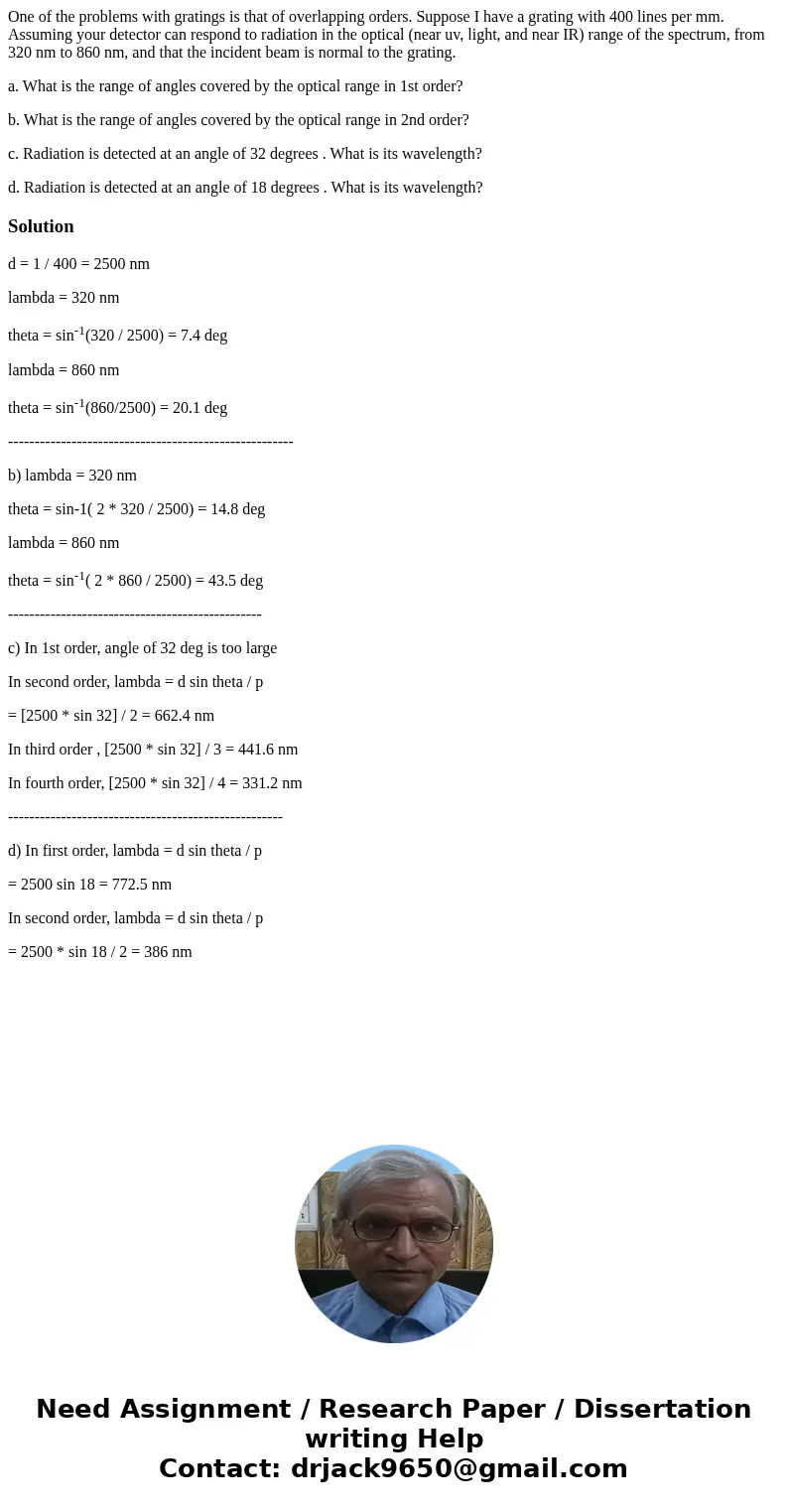One of the problems with gratings is that of overlapping ord
One of the problems with gratings is that of overlapping orders. Suppose I have a grating with 400 lines per mm. Assuming your detector can respond to radiation in the optical (near uv, light, and near IR) range of the spectrum, from 320 nm to 860 nm, and that the incident beam is normal to the grating.
a. What is the range of angles covered by the optical range in 1st order?
b. What is the range of angles covered by the optical range in 2nd order?
c. Radiation is detected at an angle of 32 degrees . What is its wavelength?
d. Radiation is detected at an angle of 18 degrees . What is its wavelength?
Solution
d = 1 / 400 = 2500 nm
lambda = 320 nm
theta = sin-1(320 / 2500) = 7.4 deg
lambda = 860 nm
theta = sin-1(860/2500) = 20.1 deg
------------------------------------------------------
b) lambda = 320 nm
theta = sin-1( 2 * 320 / 2500) = 14.8 deg
lambda = 860 nm
theta = sin-1( 2 * 860 / 2500) = 43.5 deg
------------------------------------------------
c) In 1st order, angle of 32 deg is too large
In second order, lambda = d sin theta / p
= [2500 * sin 32] / 2 = 662.4 nm
In third order , [2500 * sin 32] / 3 = 441.6 nm
In fourth order, [2500 * sin 32] / 4 = 331.2 nm
----------------------------------------------------
d) In first order, lambda = d sin theta / p
= 2500 sin 18 = 772.5 nm
In second order, lambda = d sin theta / p
= 2500 * sin 18 / 2 = 386 nm

 Homework Sourse
Homework Sourse